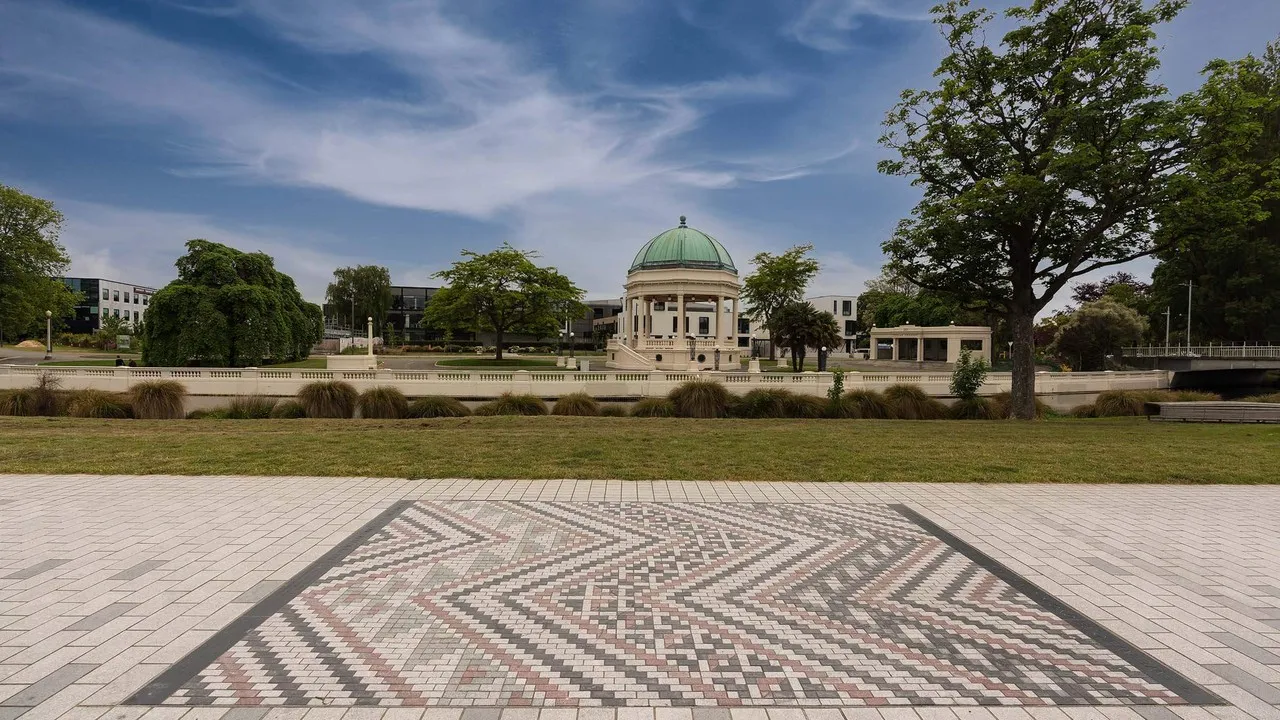Learn more about this Whāriki. Located along the Ōtākaro Avon River. Promenade in the Health Precinct.
Whāriki are woven mats which utilise traditional Raranga weaving techniques. These weaving designs have been adapted using stone pavers.
This whāriki is one of a series of 13 weaving patterns that feature within Te Papa Otakaro/Avon River Precinct. They reference the whakamanuhiri (welcome ceremony on a marae) process of welcome for all those visiting Christchurch and support the guiding principle of the rebuild for Ngai Tahu, 'Kia atahwai ki te iwi", Care for your people.
The whāriki are designed by expert weavers Reihana Parata, Queen's Service Medal, and Morehu Flutey-Henare, Master of Applied Indigenous Knowledge, with technical support from Wayne Youle, Bachelor of Design.
In this whāriki the paepae is the orator’s bench where the speakers sit from the beginning of the welcome ceremony (pōwhiri).
The local people, hau kāinga, prepare their marae for the manuhiri: physically – represented by the green pounamu design; mentally – represented by the kete (basket, kit) design; and spiritually – represented by the poutama (the stepped pattern of tukutuku panels and woven mats) design.
Listen to the audio
Next stop - Instream Ecological Restoration













